Join us this week as we take a closer look at the Pyramids of Love at Moody Gardens! Learn about the intricate relationships and courtships that take place in the animal kingdom throughout the week on our blog and look for our trivia questions on Facebook & Twitter for chance to win Aquarium and Rainforest tickets. Make sure to stop by February 14-16 for Valentine’s Day themed animal enrichment and presentations at the Aquarium and Rainforest Pyramids.
LOVE KNOWS NO BOUNDARIES
There’s plenty of love to discover within the Rainforest Pyramid! Here’s a look at the relationships between some of our most popular animals:
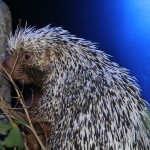 Prehensile-tailed Porcupine
Prehensile-tailed Porcupine
Letting a love interest know how you REALLY feel about her
It’s not every day that female porcupines are interested in mating. It’s estimated the time is only 8-12 hours a year! That gives little time to make a great first impression. So what does the male do? The most bizarre thing imaginable; he soaks her with urine. If the female doesn’t enjoy this unusual advancement, she’ll just give a shriek of disgust and shake off the urine.
 Mandarin Ducks
Mandarin Ducks
Vanity isn’t everything
The males have a striking ‘nuptial’ plumage, making it easy to distinguish them from the females…however, it doesn’t last long. Once the breeding season is over, it’s off with the “suit and tie” and the males will enter the ‘eclipse plumage’ phase where they look just like the female. But while they are all dressed to impressed, they also have to “walk the talk”! These males must perform to their female love interest, not just a dance, but cold calculated courtship display! The males time their moves just right by bowing and vocalizing to suit the females’ choosiness. With the male’s superb looks and artistic dance, he’s sure to ruffle her feathers, in a good way of course.
 Ocelots
Ocelots
A mother’s love is so strong
Who said that being a single parent is easy? Female ocelots raise their young on their own for two years. Since ocelots typically only breed every other year and usually produce only one kitten, you know you have to really have love for your young. During this time, the cub is learning what mom does best: hunting, eating, and how to stay alive. A mother’s love is always the best solution.
 Macaws
Macaws
A painting worth a 1,000 words
How colorful can you get? Most birds use their keen eyesight to distinguish a good mate. Macaws are distinctly, colorful and beautiful. The vibrancy of their plumage can help a bird looking for love to determine the overall fitness and health of a potential mate. Hue said looks don’t matter?
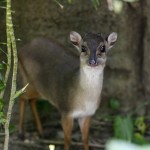 Blue Duiker
Blue Duiker
Love Patrol
Have you ever met a couple that does everything together? Well when duikers mate and form a bonded pair that’s exactly what happens. These tiny deer tend to eat, sleep, raise young and mark territories together. That’s right! Both males and females in a bonded pair will walk around their territory and scent mark. No, “mine or yours” in this relationship, it’s all ours!
 Cotton-Top Tamarin
Cotton-Top Tamarin
A loving mother and father, and uncle, and aunt, and neighbor, and that guy that lives down the road, and mom’s sister’s best friend from high school….
Have you ever had a friend of the family that tells you all sorts of stories about you being young and how cute you were when you were a baby? Cotton-top tamarins do. This species of tamarins cooperatively breed, which means that the dominate breeding pair have offspring that are tended to be all members of the group. Doesn’t matter if you’re the older sibling, or an aunt/uncle, they all help raise the young like their own. It is believed that this behavior helps offspring to survive to adulthood. Those who are not dominate at the time will receive the same treatment when they’re next in line. Time for cheek squeezing!!
 Scarlet ibis
Scarlet ibis
Hi, this is my mother, my father, and their own body guard
Scarlet ibis nest just like any other birds. They build a nest out of twigs and raise young in it, except one little twist. Just a few feet away from the nest is another scarlet ibis who’s watching out for predators. This is called colonial nesting. Many individuals may mate and build nests, but everyone has security duty and will rotate (even laying on nests) to be guards. Each sentinel has a duty to alert the rest of the group of when predators are spotted. Think of it as a couple’s own personal secret service. It’s a loving job.
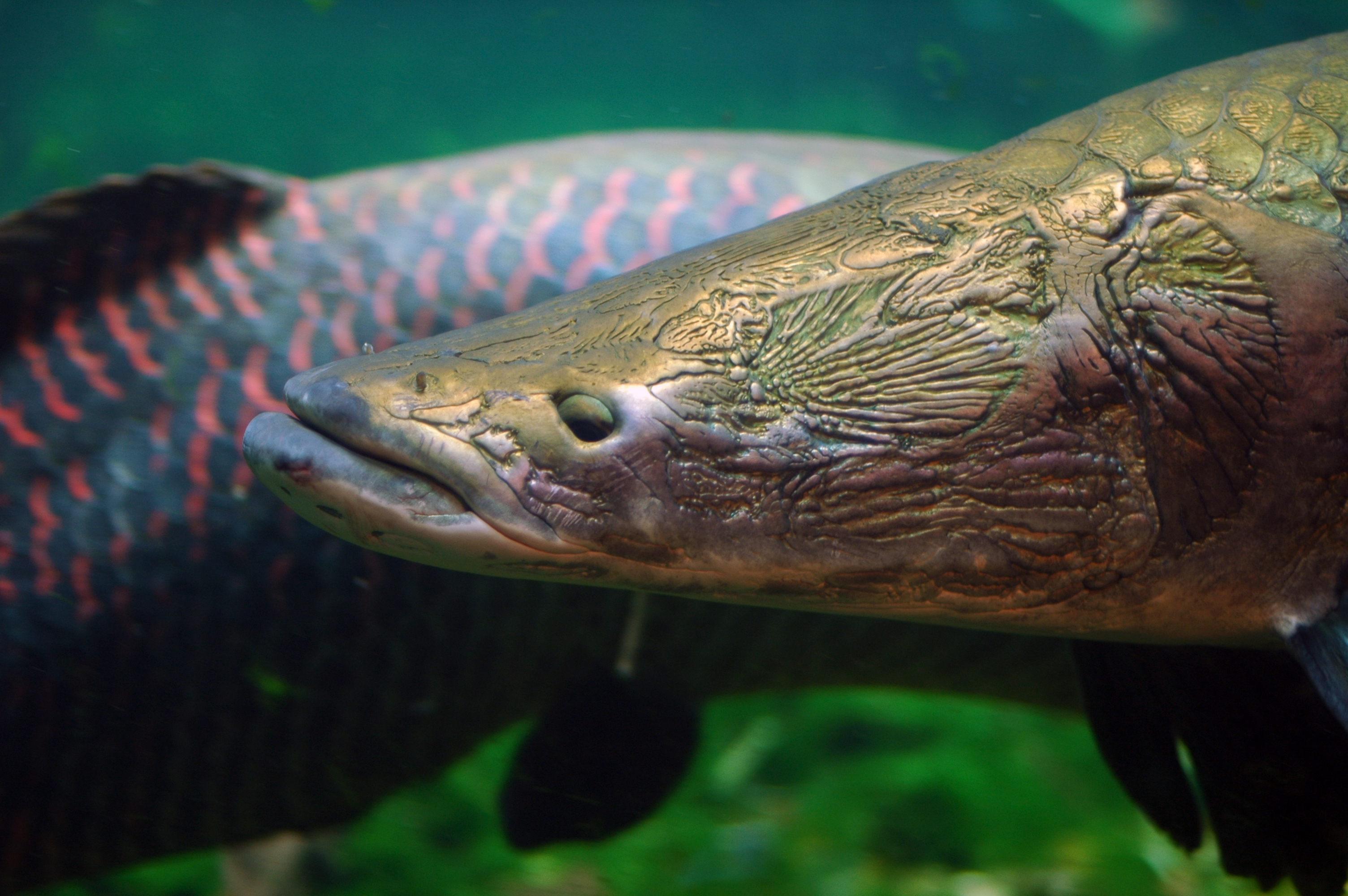 Arapaima
Arapaima
A father’s love has no boundaries, well maybe one
Arapaimas are mouth brooders meaning that they keep eggs and small fry in their mouths. This helps keep predators from eating them, while also making sure the young are all in one place at a time. The mother isn’t missing from this equation though. She’s protecting the male by continuously being by his side and circling around him and the young when predators are present. Although this is a very odd way to house your young, many fish do it. For instance, several species of cichlid fish use this same parenting strategy.
 Gaboon Viper
Gaboon Viper
Fighting for Love
Sometimes things can’t be settled by looks, by food, or by dances. Sometimes it’s an all out battle for the female. When two gaboon viper males meet during mating season, they have to make sure that they are the only one in that area able to breed with females. So they get into a match of endurance. They will stand as tall as they can and face each other, each one trying to push the other male down, squeezing him, and trying to tire him out. All in trying to prove to the other male with brute strength that he is the dominate one.
 Giant River Otters
Giant River Otters
Big brother and big sister love
Those of us who have brothers and sisters all know how hard they can be on us from time to time. Although in the end, they still love us no matter what. If you take a look at the Giant River Otters and look closely at their groups out in the wild, you’ll realize they are mostly made up of the same family group. The mother and father will give birth to offspring that stay with the family group, even after maturity. These older offspring stay on in the family for hunting, security, and most importantly to help raise the next set of kids.
 Jam out with the animals of the Rainforest Pyramid at our Music Enrichment Event this Saturday and Sunday October 11-12 between 10 a.m. and 4 p.m.
Jam out with the animals of the Rainforest Pyramid at our Music Enrichment Event this Saturday and Sunday October 11-12 between 10 a.m. and 4 p.m.

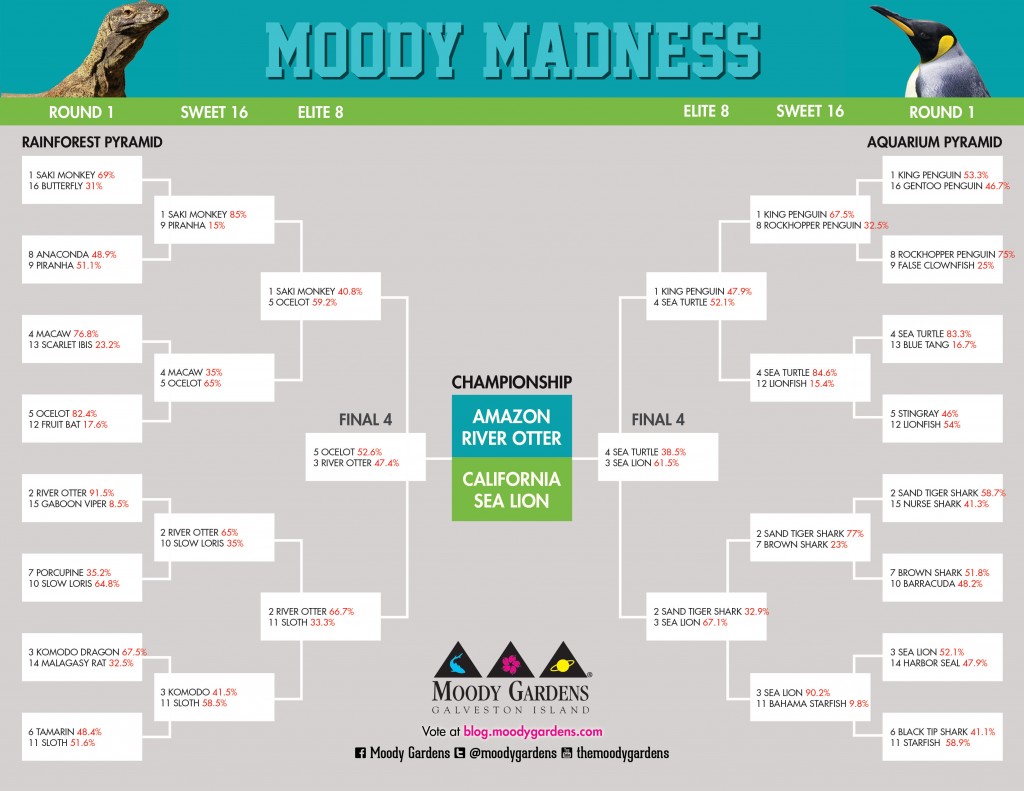
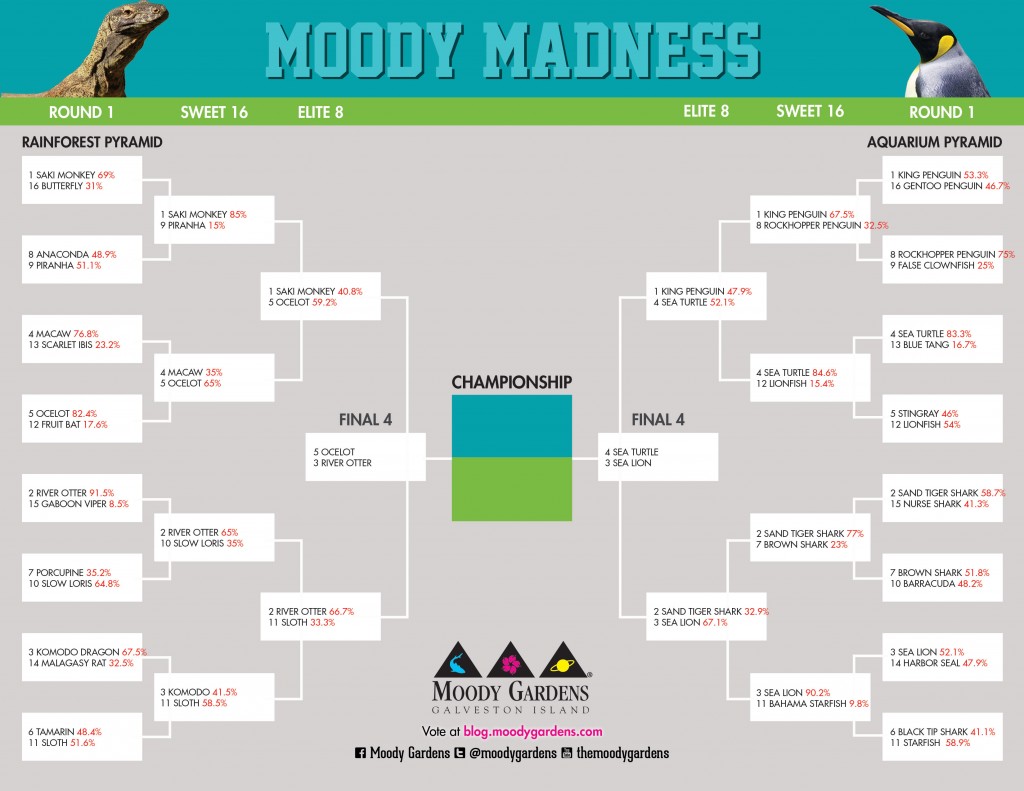
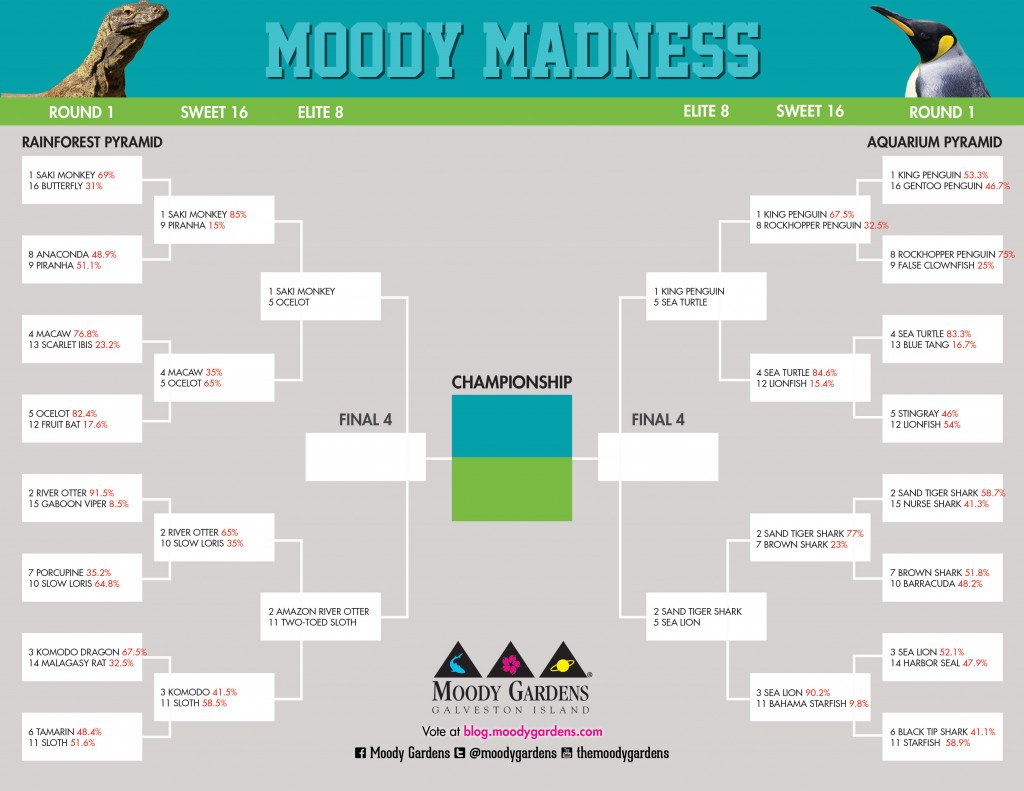
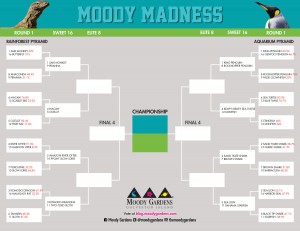
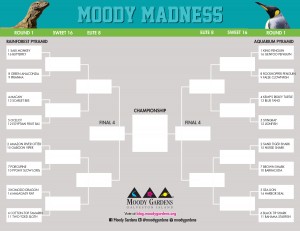
 Prehensile-tailed Porcupine
Prehensile-tailed Porcupine Mandarin Ducks
Mandarin Ducks Ocelots
Ocelots Macaws
Macaws Blue Duiker
Blue Duiker Cotton-Top Tamarin
Cotton-Top Tamarin  Scarlet ibis
Scarlet ibis

 Giant River Otters
Giant River Otters
 This endearing and very vocal chick loves its gruel, which is a liquid diet made up of fish, shrimp, pellets, water and vitamins which is hand fed five times a day. Biologists are hoping to introduce him to whole fish this week.
This endearing and very vocal chick loves its gruel, which is a liquid diet made up of fish, shrimp, pellets, water and vitamins which is hand fed five times a day. Biologists are hoping to introduce him to whole fish this week.
